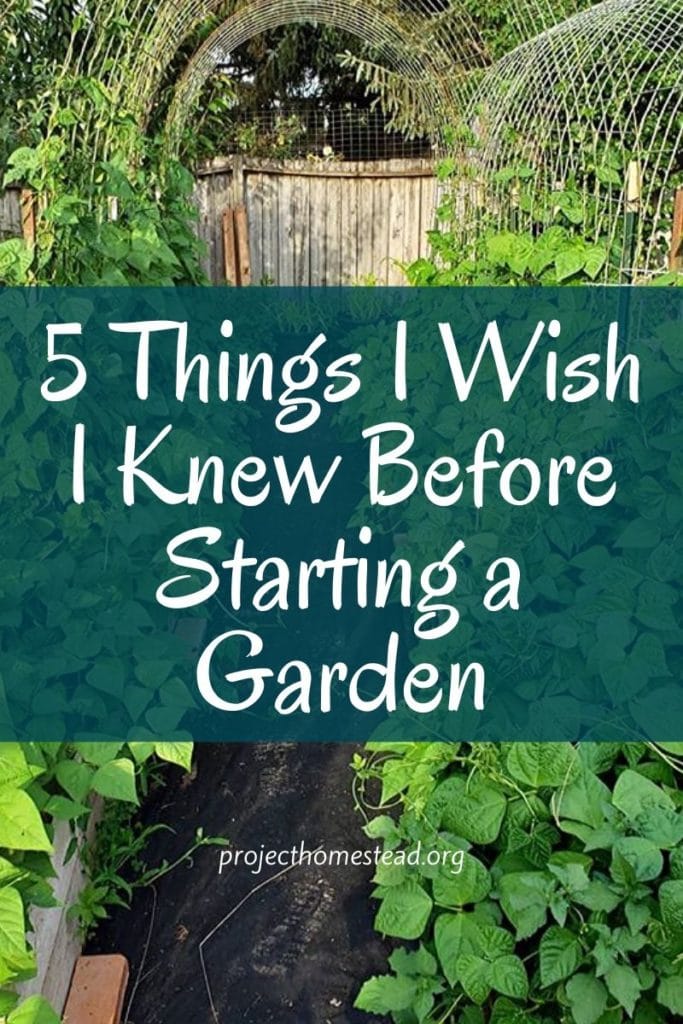
Have you ever wanted to start a garden, but have no idea where to even begin? You have dreams of growing alll kinds of plants, providing your family with lots and lots of nutritious food, and can visualize all the beautiful flowers that bring little critters like butterflies and hummingbirds. Ah, the beauty of it all. Yet, in the back of your mind, you may wonder how on earth you’ll ever accomplish all of that. What do you need to know before starting a garden?
There seems to be sooo many things to do! I remember when I first started my garden. It seemed so overwhelming to me. All the research, the ideas, and the dos and don’ts…
Looking back on all the things I’ve learned in the last 10+ years of gardening, the mistakes I’ve made, and the experiments I’ve done…five things come to my mind that I wish I knew then, before I ever started.
Here are the five things I wish I knew before I ever started a garden:
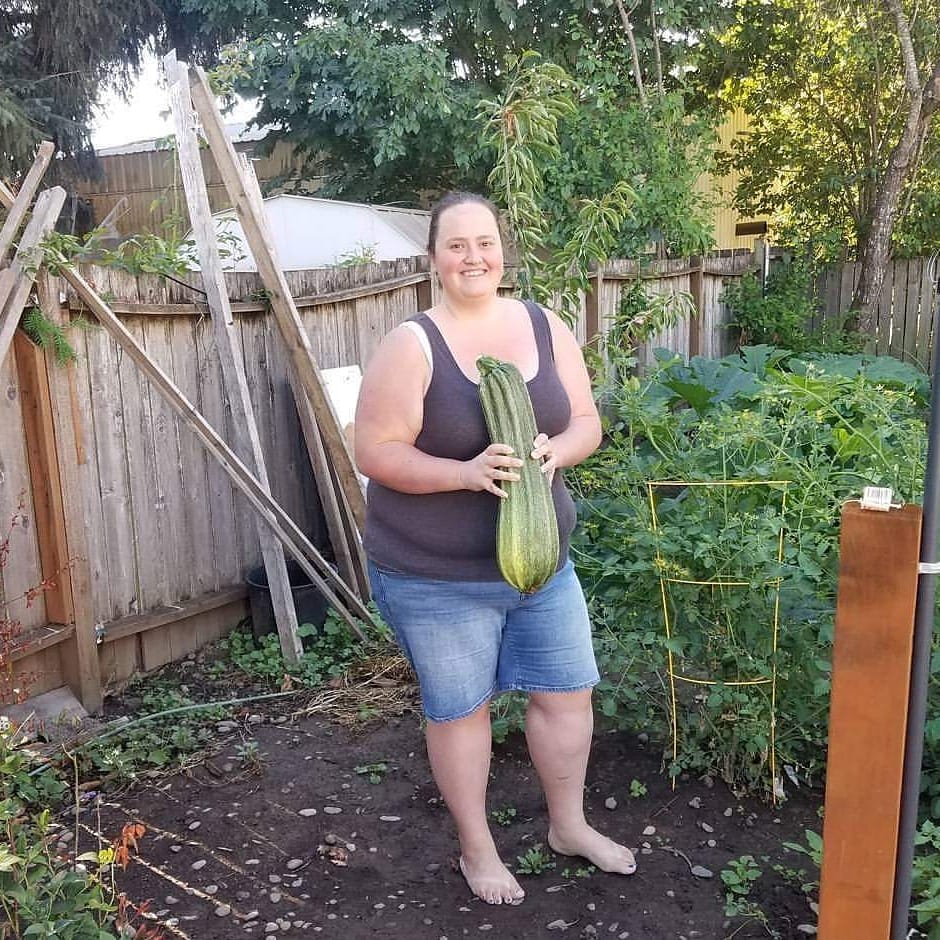
#1 Start Small
Boy, do I wish I had listened to this gardening advice when I started from seed for the very first time… I was so excited to have a setup where I could plant lots and lots of seeds. We had just manifested hundreds of free nursery pots and other gardening supplies. My husband and I saw this as an incredible opportunity to grow enough plants to take to a local farmer’s market and sell to our community. I got ambitious and planted at least 20 varieties of plants, veggies and flowers, and ended up with over 200 plants. It quickly became a bit overwhelming. Trying to make room for them as they grew and needed to be transplanted into bigger containers (lesson #1 here: make sure you have enough space for all the things you want to grow).
Then, came the fact that I would either over or under water them, not have enough lighting, and even forgot them outside one night which killed most of them because it froze (lesson #2: don’t leave outside when it’s supposed to freeze). As if that wasn’t stressful enough, we ended up replacing almost all of them, only to have a lot of them get leggy because I forgot to make sure they were all under proper lighting. Taking care of over 200 plants can be a bit time consuming. Especially when you add in a 9-5 job, raising chickens, social gatherings, and other daily duties. Besides all of this, you’re brand new to growing from seed.
A similar thing happened when we moved from our apartment to a lot with room for an actual garden. Again, I got excited and began growing all kinds of veggies. While I was fairly successful, there were times I wanted to throw my hands in the air and give up. I spent countless hours outside trying to maintain all the plants, figuring out why some got this powdery white stuff all over them, coming across tomatoes that were half-eaten by slugs, and those tiny pesky little bugs called aphids that destroyed a good chunk of my produce. Add in getting used to a good watering schedule, maintenance, and harvesting, it became pretty daunting. Looking back on it now, I did learn a lot of valuable lessons, but some stress could’ve been avoided had I started with just a few plants in a smaller area.
So, whether this is your first year as a gardener in general or your first year incorporating a new method, don’t fall into the overwhelm of trying to do everything all at once. Choose a few veggies that your family loves to eat, and grow those. Grow just enough plants to make salsa. Or enough to enjoy fresh salads every day. You don’t have to plant alllll of the veggies. By starting out small, you’re able to really focus on the tasks at hand and learn about the different things that come up on a much smaller scale. This makes it much easier to maintain.
However, if you do get ambitious – HAVE FUN with it! Seriously, gardening really is just a big science experiment. Sometimes you just never know what’s going to happen. 😉
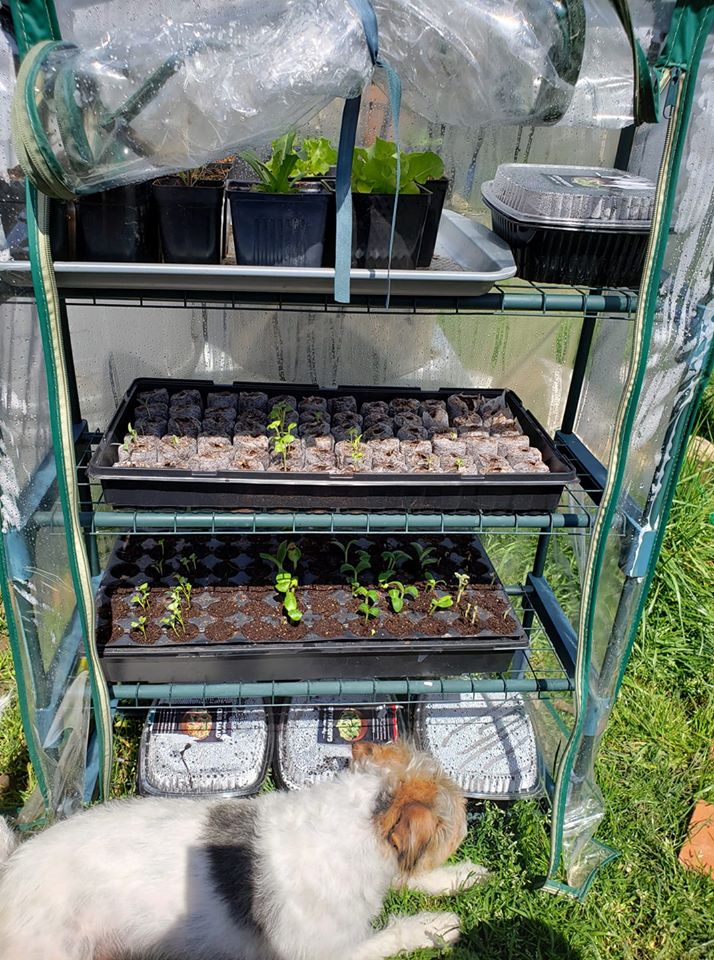
#2 Get Control of Weeds FAST
Weeds can be a pain. While I’ve recently learned that there are several weeds that actually provide nutritional and medicinal benefits to us and animals, let’s face it, having them in the garden is just not ideal. My family and I are usually fairly good about taking care of weeds as soon as they start to appear. But we weren’t always that way. In the beginning, I would see weeds and think to myself, “ok, I see you, I can take care of you later. Right now I need to water and pick my veggies.” That, my friends, was a slight mistake on my part. Maybe I was just “lucky” and had super weeds growing, or maybe time just got away with me. Either way, within a matter of days those weeds grew significantly. They developed deeper roots and stronger stems. They started taking over my other plants!
Weeds are just like any other plant, they need water and nutrients as well. Fine, if they’re by themselves. When they’re snuggled up close and personal to your tomato plants, however, it becomes a competition between the two. To reduce stress on your plants, and ultimately yourself, it’s best to take care of them as soon as they appear. Use a hoe to chop them or dig them out of the dirt, pull them up by hand, or smother them with weed fabric. This last year, we took preventative measures and placed weed fabric all along our pathways and areas that we didn’t want them to grow. This reduced the amount that popped up significantly and definitely made them easier to manage.
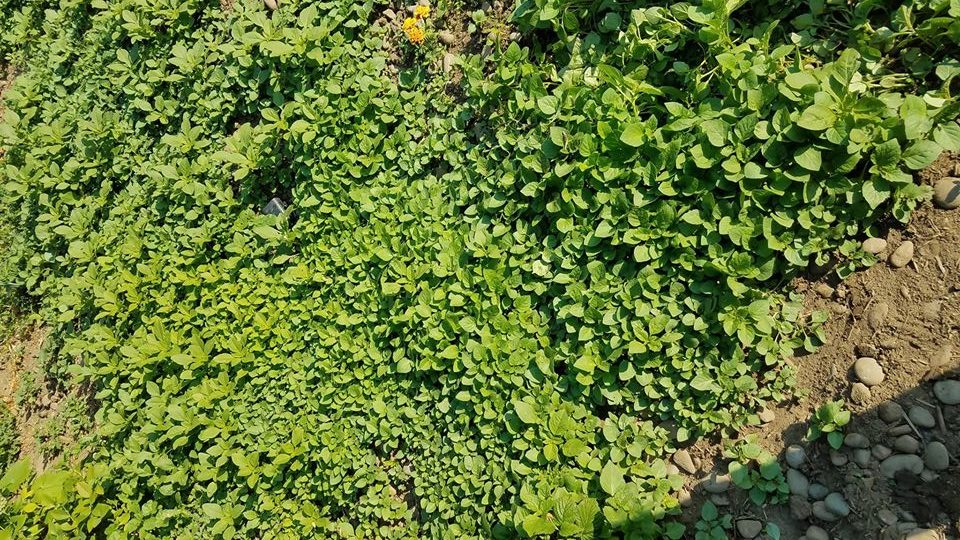
#3 Plan in Advance
Until a few years ago, I never planned out my garden space. I just went to the local nursery or Home Depot and purchased starts of whatever type of veggie I thought looked good at the time. It wasn’t until we went to completely re-design our garden space that the idea of planning even crossed my mind. I’ll tell you, that was a huge game changer. I’ll never go back to spontaneous gardening again. Ok, no. I might do a little spontaneous purchasing of plants, but for the most part everything will be planned and mapped out ahead of time.
So, what should you plan and how does it help? Things I like to plan out are: what type of plants I’m planting, any material I may need, draw out any updates to the space (like if we’re moving raised beds or installing a new arch trellis), and make a list of key dates for things like planting seeds and transplanting outside. I’ve found this to be extremely helpful because I go into garden season knowing exactly what to expect. I know what material I need because I’ve measured my space and decided on wood or containers and how much of each is needed, I know what plants I’m getting and how many seeds I need to grow, and I know the key dates things should be done by. It takes out the guess work and the headache of walking to the store thinking you’re only spending $100 when in reality you need around $300 of material. Planning things ahead of time definitely saves a lot of headache and scrambling at the last minute.

#4 Don’t be Afraid of “Failing”
There will be elements to it that are outside of your control, like weather for instance. You may forget to water, you may over water, maybe you’ll get busy with life and forget to go out for a few days to check on things, or you may even forget about an entire tray of plants that you started from seed (see image below). Whatever happens, know that with each failure, each mistake, each obstacle is a lesson learned. Know that there really isn’t such a thing as failing in gardening – yes, even if your plants die – because you’ll be continuously learning.
I’ve had many, many “failures” and have made many mistakes. Each of them I’m grateful for. Why? Because I learned a lesson in every single situation. If there’s anything you get from this – I hope it’s that you know it’s perfectly OK to not have everything turn out perfectly. To know that you can push through and overcome whatever obstacle that stands before you and your garden.
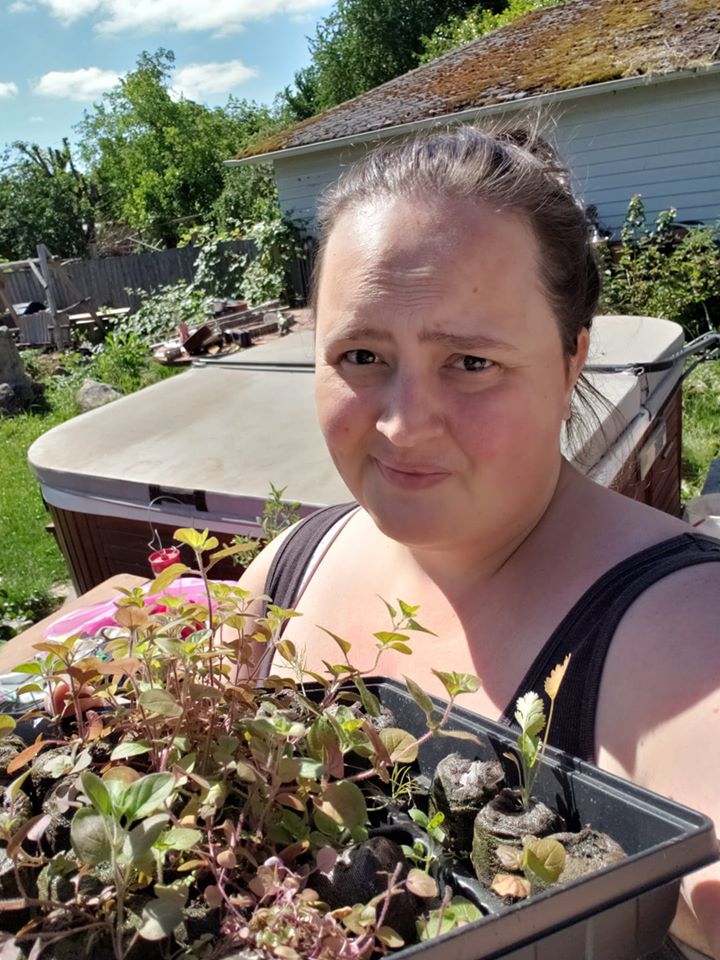
#5 Have FUN!
Gardening, after-all, is just a big science experiment. And it’s said that playing in the dirt can make your brain happy. So, get out there, get your hands dirty and soak in all the amazingness that Mother Earth has provided. Sit back and watch your beautiful plants grow. Watch all the life that your garden attracts – from butterflies to hummingbirds to bees, and more. Take some time to soak it all up and enjoy the process. Because you are creating a beautiful gift for you and your family – the gift of nutritious food that YOU have grown YOURSELF. That, my friends, is an amazing feeling and one that should be cherished.
Whether you are in an apartment, have acres of land, or somewhere in between – there is a way that you can enjoy your own fresh produce right where you are. There are several methods that you can incorporate in your garden from anywhere (sign up for our newsletter below and get a free copy of my garden methods article, full of info on the methods we use).
If you’re brand new to gardening or just want some general ideas on where to begin and how to plan – I encourage you to come join our Facebook group Sustainable Living with Project Homestead and also to check out my beginner’s gardening course Green Thumb Mastery. Our last round for 2020 begins April 19th!
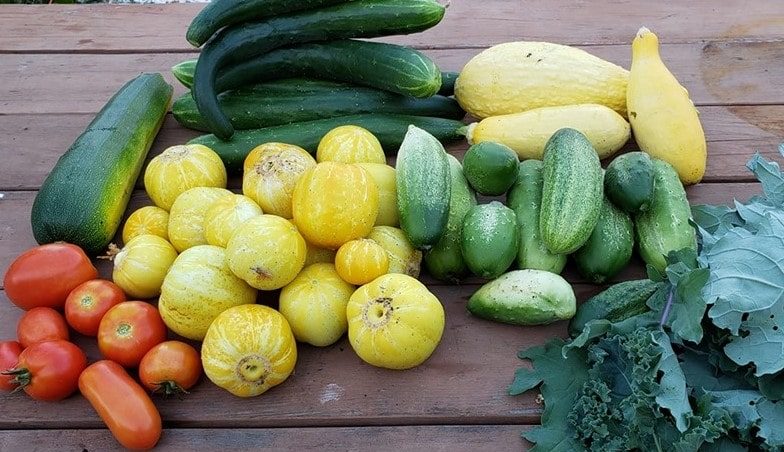

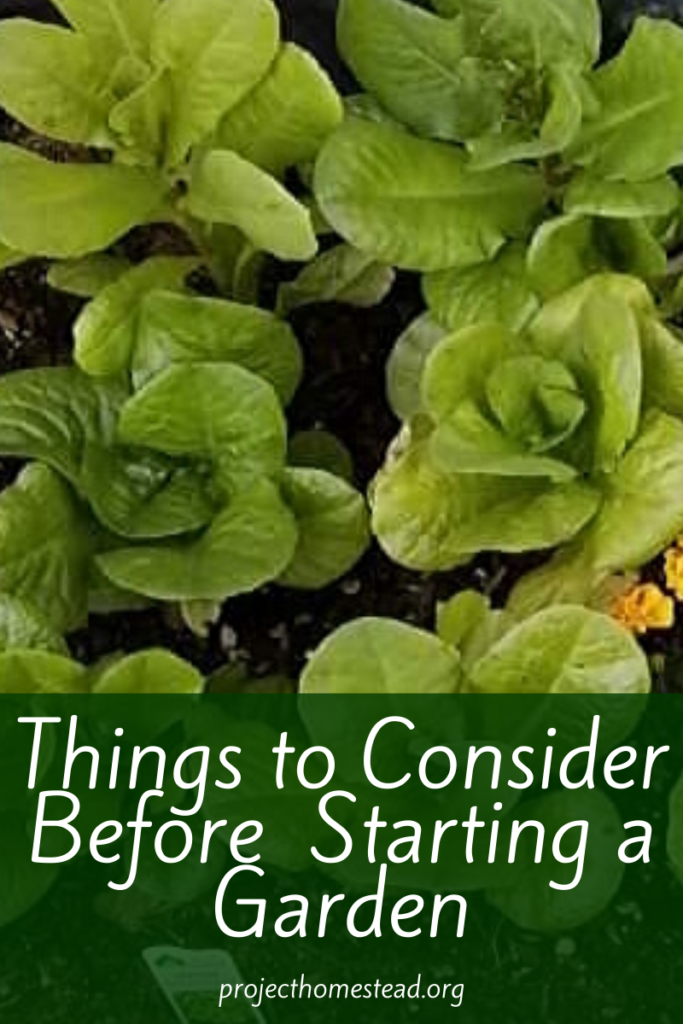
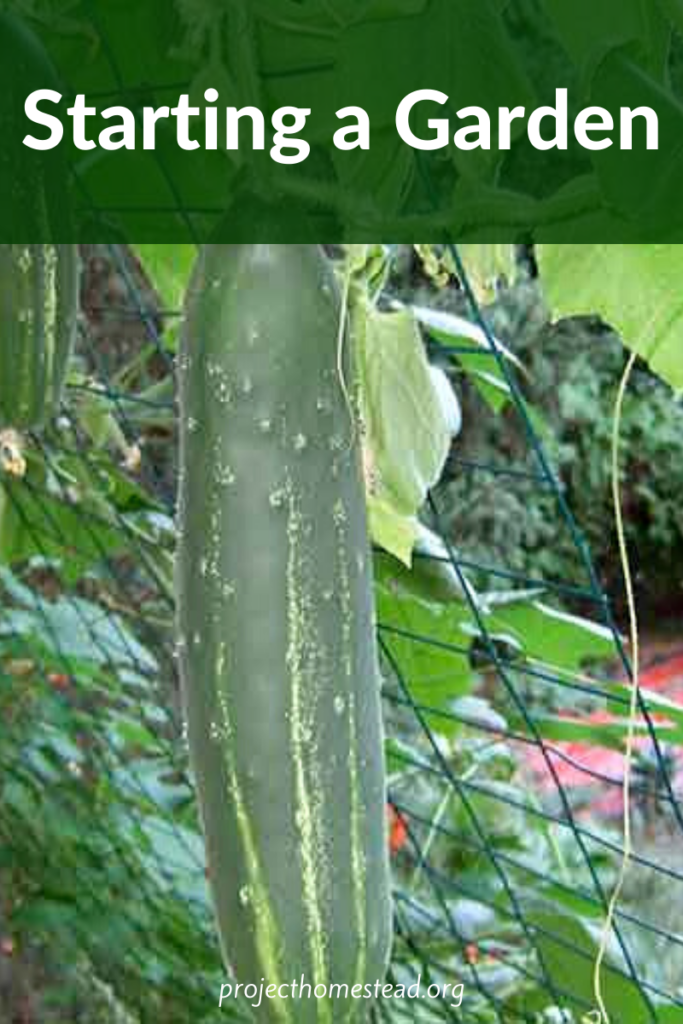
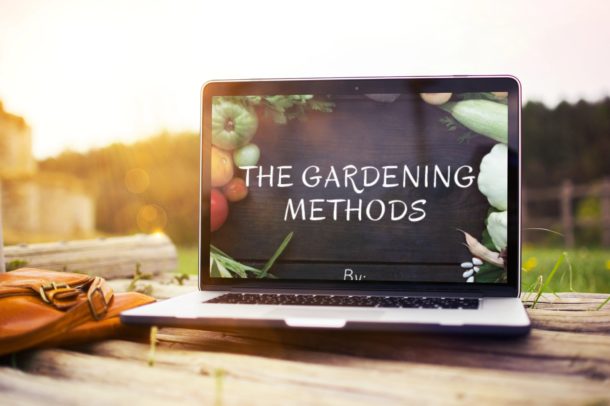
Thank you for such informative information.
You’re very welcome!